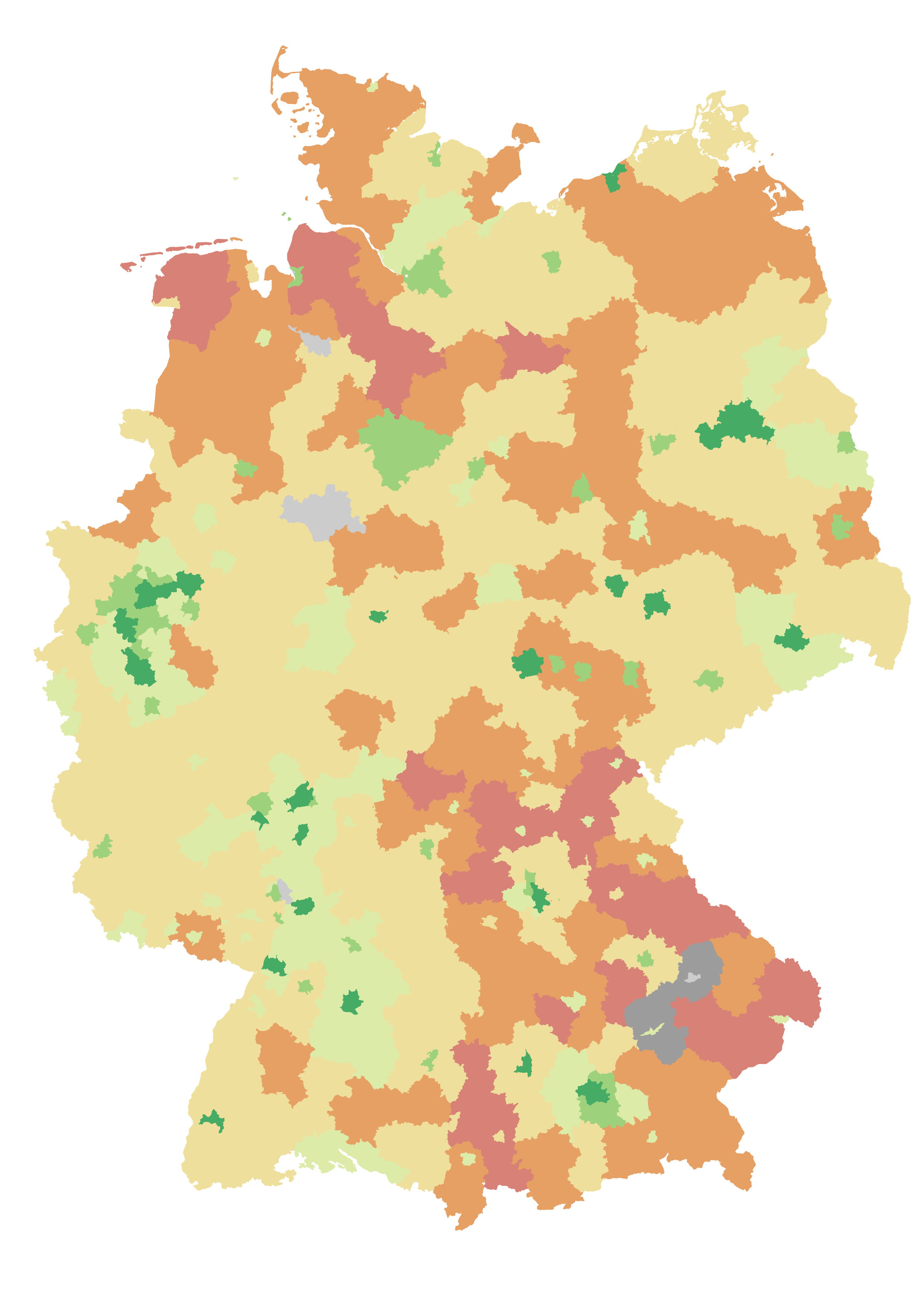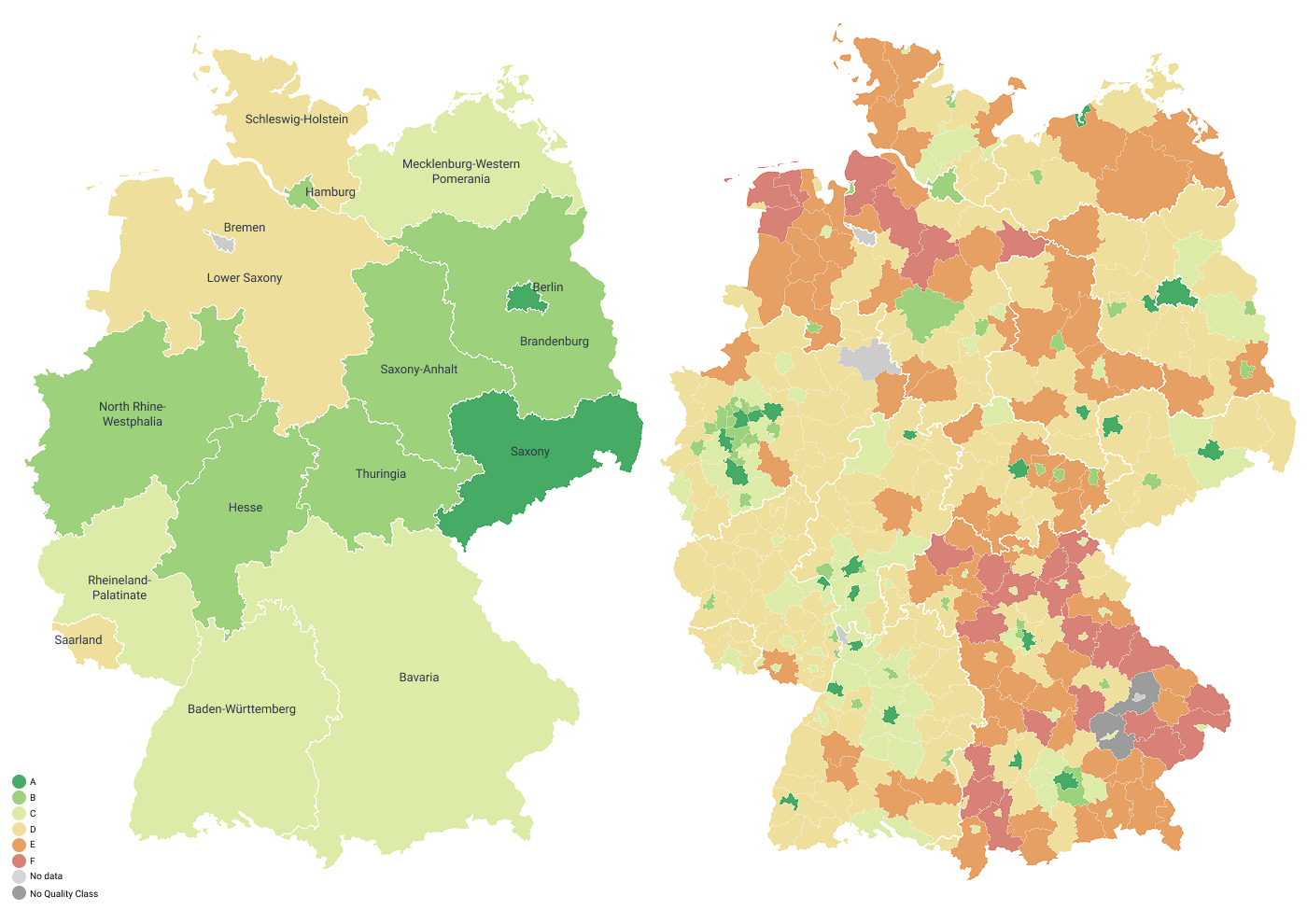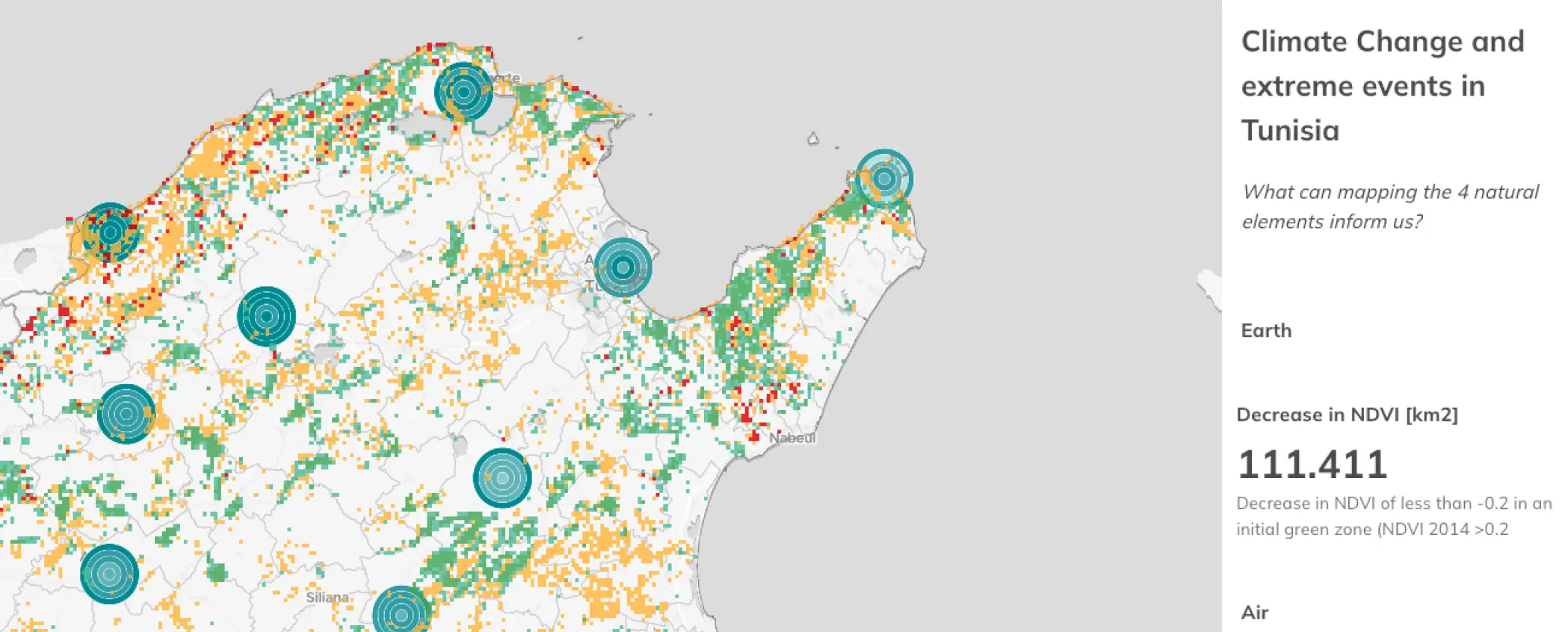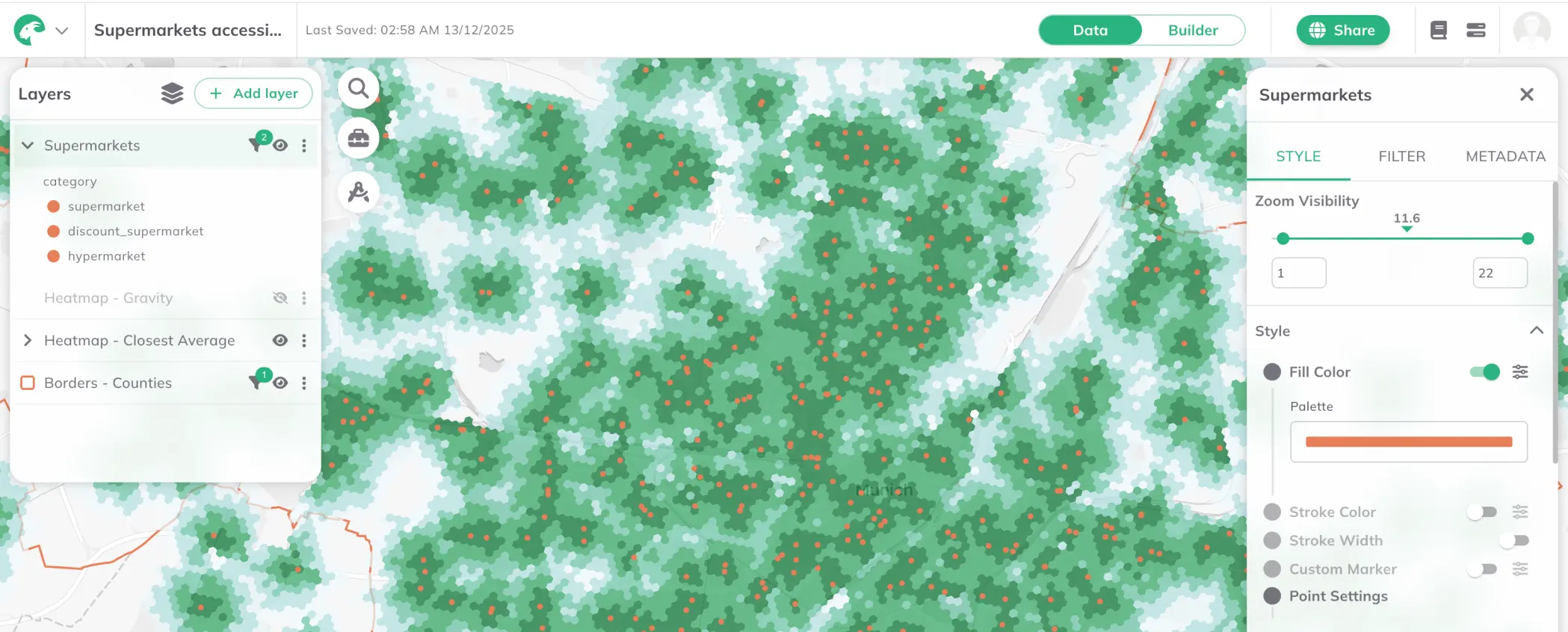Use cases

Nowadays, cities are challenged to create a public transport system that meets the everyday needs of citizens. The main competitor is the private car, which is often seen as the more flexible and independent option. However, this mode of transport is the most expensive and least environmentally friendly for everyday travel. By contrast, a well-designed and attractive public transport system could reduce reliance on private cars, as it offers an affordable, sustainable, and efficient way to move a large number of people.
But what makes a public transport system truly high-quality? A key factor is its ability to enable efficient travel both within and between municipalities. To objectively assess where improvements are needed, planners can use a standardized indicator called Public Transport Quality Classes (in German: ÖV-Güteklassen). Originally developed in Switzerland, and widely applied in spatial planning across Switzerland and Austria, this indicator evaluates key service dimensions: available transportation modes, service frequency, and stop accessibility. Applying this workflow in GOAT, we analyzed public transport quality across German municipalities.
The Public Transport Quality Classes provide an objective way to compare public transport systems. While calculation methods vary slightly, the core principles remain consistent:
Different countries apply this framework with local adaptations. While Switzerland uses 4 classes (A–D), with a 60-minute maximum frequency and a 1,000-meter buffer distance, Austria employs 7 classes (A–G), with a 210-minute frequency and a 1,250-meter isochrone distance (following actual street networks). Both approaches rely on working-day timetables between 6 AM and 8 PM. For our analysis in Germany, we have developed a customized quality classes system in GOAT.
In GOAT, we've developed a flexible classification system that allows users to customize calculations for any day and time interval, while choosing between buffer or isochrone-based computations. This adaptability ensures the model fits diverse project needs while maintaining its core principles. The classification process follows these key steps:
.png)
Our analysis uses the most current nationwide 2025 GTFS dataset from DELFI e.V., ensuring an up-to-date evaluation of public transport quality. While results may vary slightly depending on calculation methods and datasets used, the analysis provides a comparative overall view on the current public transport qualities.
As expected, dense urban areas achieved higher PT Quality Classes. City-states such as Hamburg and Berlin performed well, as did the highly populated Rhein-Ruhr and Rhein-Neckar regions. In contrast, rural areas - particularly in Bavaria and Lower Saxony - showed a lower public transport quality which can be attributed to their dispersed populations and less frequent service.
At the state level, all regions reached at least a Quality Class D, indicating that at least 50 % of the country's population lives in areas with uality class D or higher.

Going beyond state borders, we looked at the results using the RegioStar7 typologies, which considers the typical local characteristics of an area (metropolises, central cities, small towns & villages, etc). The analysis revealed that public transport quality consistently varies by spatial typology, with urban regions systematically outperforming their rural counterparts across all comparable spatial typologies. The analysis showed a clear correlation between public transport quality, municipality size, and spatial context.
If you want to have a detailed look at how the indicator performed across spatial typologies you can download the full white paper.
Contrary to common assumptions, our analysis demonstrates that smaller municipalities can achieve exceptional public transport quality despite their size. To illustrate this, we examined the top five municipalities in each of four population size categories. The findings reveal that certain rural communities actually surpass larger cities in their public transport service quality.
You can download our full White Paper for detailed rankings and insights.
In Switzerland, Public Transport Quality Class measures are already actively shaping sustainable urban development. These indicators are embedded in cantonal structure plans and parking space ordinances. Swiss municipalities use this indicator to adjust the required parking spaces based on local public transport quality - better-connected areas allow fewer parking spaces. Austria has similar requirements, where parking regulations are linked to public transport accessibility.
This indicator can support reducing car dependency and promoting more sustainable urban development. Integrating it into planning processes helps to strengthen public transport, leading to healthier, and more liveable cities.
📌 For the full depth analysis read our white paper (available in English and German) and try GOAT to create your own analysis with just a few clicks.

Use cases

GOAT
.webp)
Insights
.png)
.jpg)
.jpg)
.jpg)
.jpg)




Whether you need state-of-the-art GIS technology, extensive datasets or expert advice – we are ready to help you shape a sustainable and liveable future for our community.